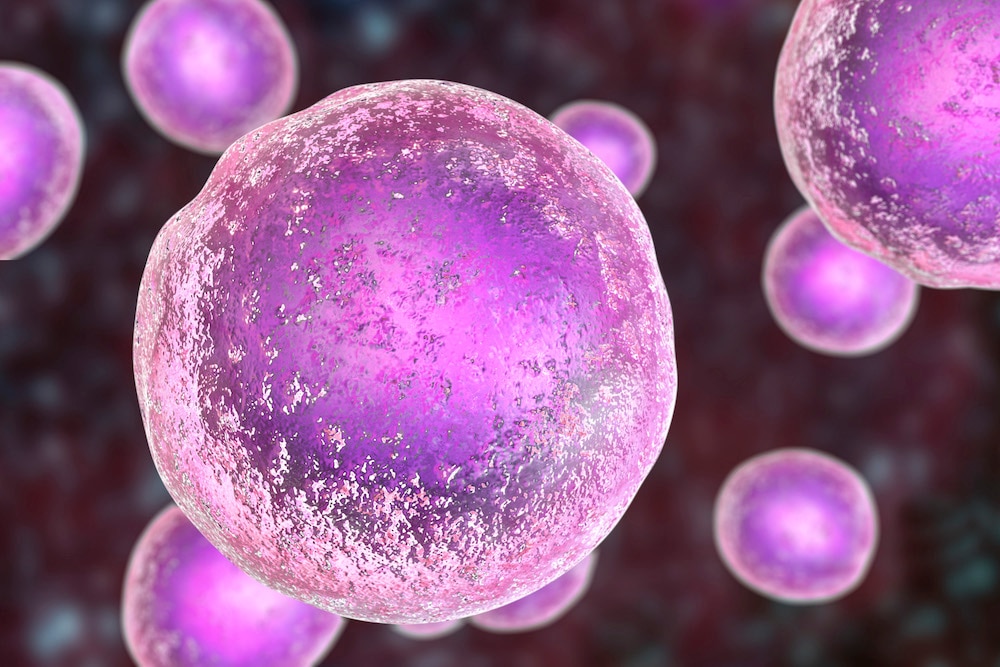Create a free profile to get unlimited access to exclusive videos, sweepstakes, and more!
You can reprogram cells, kind of like a computer — and they’ve gotten an upgrade
This reboot is on a cellular level.

Human stem cells can be rebooted so they morph into completely different cells. Now that this already futuristic method has been leveled up, it sounds even more like something out of science fiction.
This isn’t about designing humans like the embryos that could not choose their fate in Brave New World. Reprogramming naïve pluripotent stem cells (PSCs) was possible before, but researcher Peter Rugg-Gunn and his team from the Babraham Institute’s Epigenetics research program in the U.K. have figured out how to get past some potential glitches. Rugg-Gunn, who led a study recently published in Science Advances, has found out what can further promote reprogramming and even which protein to inhibit so it doesn’t get in the way.
“Naïve pluripotent stem cells can specialize into both embryonic (future embryo) and extraembryonic (future placenta and yolk sac) cell types,” he told SYFY WIRE. “This makes them hugely exciting and valuable for studying the very early stages of human development.
Pluripotent stem cells can self-replicate and create cells for every type of tissue in the human body. In their naïve phase, they can take on the same properties as the cells of an embryo before implantation, including influences on gene expression that are not inherited and come from an outside source. These are known as epigenetic influences. They are also able to do something other pluripotent cells are not capable of, which is form extraembryonic cells. In the absence of pluripotent cells that come straight from an embryo, naïve PSCs can also be formed by deleting the identity of specialized cells.
After screening for genes that both promote reprogramming and hold it back, the researchers figured out some reasons many previous reprogramming attempts were not that efficient. Reprogramming needs the epigenetic complex PRC1.3. The process involves so may different signals being fired at cells, trying to tell them what to become, and it is thought that PRC1.3 helps them resist the onslaught of signals. It supposedly keeps them from turning into something else besides naïve PSCs by preventing certain genes from switching on.
“It surprised us that the building blocks of PRC1.3 changed depending on whether the pluripotent stem cells were in a naïve or primed state,” said Rugg-Gunn. “Before we discovered this, it was thought that PRC1.3 was always formed of the same components.”
Some experiments in which PRC 1.3 was removed ended up with cells that fast-forwarded into a specialized cell type instead of rewinding to the naïve phase. They have a tendency to turn into nerve cells for some reason. The researchers think that some cells might be making PRC1.3 with different ingredients than others, depending on what they want to specialize in, something that also happens early on in human development. It is possible that this complex protects unspecialized cells in embryos — and that things don’t always go as planned.
Something going wrong with how PRC1.3 affects stem cells could keep an embryo from developing any further. Another thing found to impede reprogramming is the epigenetic protein HDAC2. When this was blocked, cells could be reprogrammed faster. Both of these insights could be valuable for future treatments of genetic diseases. For example, extraembryonic cells might not sound like a big deal, but Rugg-Gunn thinks they can be morphed into pre-placental cells that can be studied to see why the placenta might not be forming the way it should.
“We need to be able to create naïve pluripotent stem cells with very high efficiency by reprogramming,” he said. “The current low efficiency of this step is a major barrier, but now that we have identified some problems, we can try to overcome them.”














